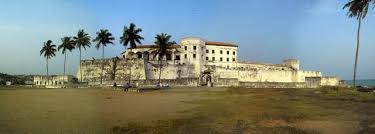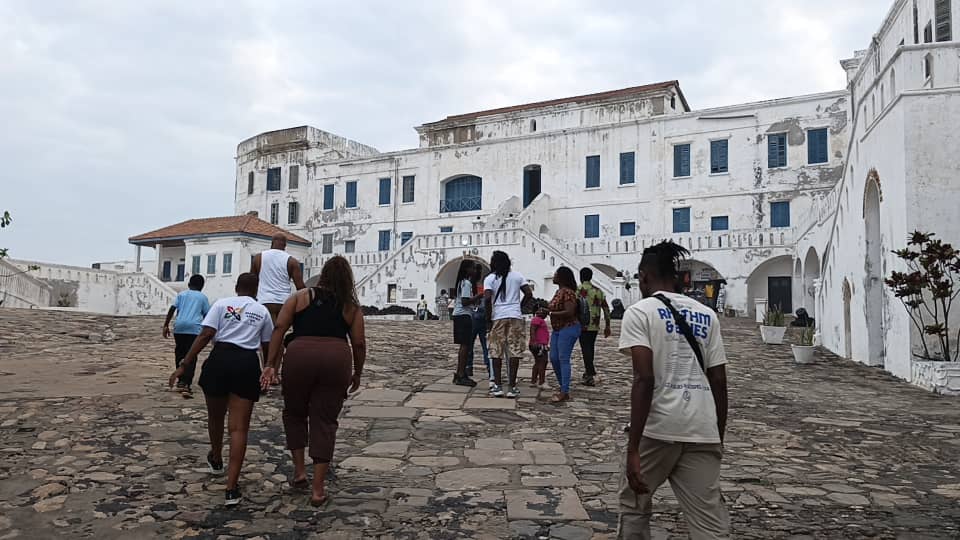DISCLAIMER NOTICE
Stop! Important Advisory: Read Before Visiting Ghana’s Historic Slave Castles
The DAGH Credibility Commitment
If you’re planning to explore the castles of Cape Coast Castle, Elmina Castle and other heritage sites in Ghana, please remember this is a sensitive YMYL (Your Money or Your Life) matter. Our goal is to provide experience‑based guidance and context, yet your meaningful visit still depends on official site management approval, respectful conduct, and full compliance with local rules and preservation requirements.
🚨 Alert: Historical Sites Require Respectful Planning & Compliance
These sites carry deep historical significance for millions of people around the world. Whether you’re attending for heritage connection, reflection or tourism, you must abide by all site‑specific regulations, entry requirements, and respect protocols. Ignoring these could result in denied access or other issues and our content, while informed, cannot guarantee your experience.
Legal & Accuracy Statement
- Informational Use Only: This article provides general guidance about the history, significance and visitor experience of Ghana’s slave‑castles; it is not exhaustive.
- Not Legal or Heritage Authority Advice: DAGH is an advocacy organisation, not a government agency, heritage authority, or legal arbiter.
- Dynamic Conditions: Entry conditions, site rules, opening hours, tour guides, fees and access protocols can change at any time by the managing authorities of the castles. DAGH assumes no responsibility for disruptions, denied access, or losses arising from reliance solely on this content.
Ghana’s coastline tells stories that shaped the world. Along its shores stand centuries-old forts and castles that serve as powerful reminders of the transatlantic slave trade. Among the most renowned are Cape Coast Castle and Elmina Castle, both symbols of remembrance and resilience. Explore these sites with Diaspora Affairs Heritage Tours
Today, these sites serve as places of reflection and healing. Many visitors light candles, say prayers, or leave messages of hope, honoring the lives lost and celebrating the enduring strength of the human spirit. They remind us not only of pain but also of endurance, unity, and the unbreakable will to overcome, a vital chapter in both Ghana’s story and humanity’s shared history.
Journey Through History: Cape Coast and Elmina Castles
Standing as solemn sentinels on Ghana’s southern shores, Cape Coast Castle and Elmina Castle are poignant UNESCO World Heritage Sites. They bear witness to the turbulent centuries of the transatlantic slave trade and the resilience of those who endured its horrors.
Built by European traders between the 15th and 17th centuries, these fortresses initially served as trading posts for gold and ivory before becoming central hubs in the trade of enslaved Africans. A guided tour through their halls and dungeons offers a deeply moving encounter with this painful past, culminating at the infamous “Door of No Return,” through which countless Africans took their final steps on home soil.
Cape Coast Castle: A Fortress of Agony and Endurance

Originally constructed by the Swedes in 1653 for timber and gold trade, Cape Coast Castle was later seized and expanded by the British, transforming it into one of the major slave-trading centers along the West African coast.
Key Sites Within Cape Coast Castle
- The Male and Female Dungeons
Cramped, airless, and dark, these chambers held hundreds of enslaved Africans in unimaginable conditions before their forced departure. The oppressive atmosphere still echoes with their suffering and strength. - The “Door of No Return”
This portal marked the last exit from the African continent for those bound for the Americas. Today, a plaque above it reads “Door of Return,” symbolizing reconciliation and a spiritual homecoming for descendants of the African diaspora. - The Governor’s Residence and Council Chambers
Located directly above the male dungeons, these opulent quarters starkly contrast with the misery below, a haunting symbol of moral blindness and exploitation. - The Condemned Cell
A small, unlit room where individuals who resisted were left to die as punishment. - The Bastions and Cannons
The ramparts, lined with cannons, reflect the castle’s military importance and the fierce European rivalries for dominance over the trade. - The West African Historical Museum
This museum within the castle preserves artifacts and exhibits that deepen visitors’ understanding of Ghana’s history and the transatlantic slave trade.
Elmina Castle: The Oldest European Structure in Sub-Saharan Africa

Built by the Portuguese in 1482, Elmina Castle is the oldest European building in sub-Saharan Africa. Initially a fortress for gold trading, it later became one of the largest and most notorious slave-trading depots under Portuguese, Dutch, and British control.
Significant Sites Within Elmina Castle
- The Dungeons
Male and female dungeons housed thousands in suffocating darkness. The compacted earth floors, still darkened by centuries of human suffering, stand as chilling witnesses to history. - The “Door of No Return”
Like at Cape Coast, this door marked the enslaved Africans’ final passage from their homeland into captivity. - The Governor’s Balcony and Secret Staircase
From here, the governor once looked down upon enslaved women in the courtyard, choosing those he wished to exploit. A secret staircase led directly from his quarters to the female dungeons, a tragic symbol of the abuse of power. - The Church
Within the castle walls stood a chapel where Europeans worshipped, even as unimaginable suffering occurred just below, a haunting paradox of faith and inhumanity. - Solitary Confinement Cells
Lightless and suffocating, these cells punished anyone who resisted or rebelled. - The Dutch Cemetery
Located just outside the castle, this burial ground holds the remains of European officers and traders who once lived and died at Elmina.
A Place of Reflection: Learning and Healing
Visiting Ghana’s slave castles is not just sightseeing. It is a journey of remembrance, education, and emotional reconnection.
Guides bring history to life through powerful storytelling, sharing narratives of courage, loss, and endurance. For many in the African diaspora, standing within these stone walls is a deeply personal moment, a spiritual homecoming that bridges centuries of separation.
Both Cape Coast Castle and Elmina Castle stand as solemn teachers of history and resilience, urging the world to remember, reflect, and ensure that such atrocities never happen again.




